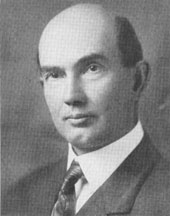(Alanson) Phelps Wyman ( 1870 – 1947)

Biography
Born and raised in Manchester Center, Vermont, Wyman attended college at Cornell University, studying agriculture. After graduation in 1897, he worked in the field of landscape architecture in several east coast offices, including several years at Olmsted Brothers. In order to supplement his prior education, he spent two years from 1902-1904 at MIT studying related subjects.
From 1904 to 1911, Wyman operated a consulting practice in Chicago and taught landscape architecture as Assistant Professor at the University of Illinois. Afterwards, he practiced as a landscape architect in Minneapolis. (1) There, he served on the Minneapolis Park Board from 1916 to 1924 and on the Minneapolis Planning Commission from 1921 to 1924. He also continued his residential landscape work.
In 1924, Wyman relocated to Milwaukee, Wisconsin—returning towards Chicago—and began service as the landscape architect to the local regional planning commission. After several years in the public sector, he returned to private practice for the remaining 23 years of his life. However, he retained his interest in city planning and worked as a private citizen to encourage the city to adopt a master plan.
Sample Projects
Wyman served as the landscape architect for the 1908 design of the Four Mounds Estate in Dubuque County, Iowa, which integrated existing Native American burial mounds into the estate. This project is now listed on the National Register of Historic Places.(2) With regard to the design philosophy Wyman used at Four Mounds and elsewhere, some scholars have suggested that he may have subscribed to the “nativist” design philosophy of fellow University of Illinois faculty member Wilhelm Miller and of his fellow Chicago practitioner Jens Jensen. (3)
Wyman worked extensively on the development of parks. Serving as a consultant to groups promoting the creation of parks, he recommended restoring wildlife to new parks. (4) One of his notable projects was a study of the suitability of the badlands of North Dakota as a national park. He also wrote extensively about parks in various publications, including the journal Parks and Recreation.
Sample Publications
Park planting, 1926
The badlands of North Dakota as a public park, 1930
Landscape architecture: Its application to civic and semi-public problems, 1912
The Washington Monument vicinity: The City of Washington's most interesting park and planning problem, 1931
Designer of parks, the superintendent, or landscape architect, 1923
Sources:
(1) James Herbert Kelley, editor, The alumni record of the University of Illinois (University of Illinois, 1913). Available online through Google Books.
(2) National Register of Historic Places
(3) Application to the National Register of Historic Places, Four Mounds Estate Historic District, Dubuque County, IA.
(4) National Park Service Archives
See also: Pioneers of American Landscape Design, 2000
Obituary, Landscape Architecture (Vol. 38, no. 3, April, 1948, pp. 110 – 112)
